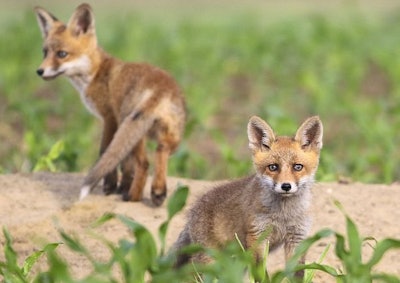
WATTPoultry.com’s coverage of the North American highly pathogenic avian influenza outbreak has been understandably focused on how the virus has affected commercial poultry flocks, with a limited emphasis on backyard poultry, wild birds and mammals.
So when I discovered that the United States Department of Agriculture (USDA) Animal and Plant Health Inspection Service (APHIS), which we use as a source for U.S. HPAI cases in commercial flocks, has also been tracking cases of HPAI in mammals, I decided to see what kind of mammals had been affected, and where these cases were.
So far, there has only been one case confirmed in 2023, with that case being a racoon in Curry County, Oregon. But there were 109 cases of HPAI in mammals in 2022, and that number doesn’t reflect that there was also a human infection in April 2022 that is not listed on the chart.
Infections by species
There have been confirmed HPAI cases in the following species of mammals: raccoon, grizzly bear, skunk, Kodiak bear, red fox, striped skunk, American black bear, Virginia opossum, Amur leopard, bottlenose dolphin, harbor seal, grey seal, fisher, coyote and bobcat.
Of these, by far the species that has been the most affected is the red fox, with 54 cases. The only other species to reach double-digits are the harbor seal (16 cases) and the striped skunk (10 cases).
Where are these cases being confirmed?
With only one exception, all of the cases listed on the APHIS website are in the northern half of the United States. If you were to extend the line that serves as the Kansas-Nebraska border from coast to coast on the map, the only case south of that line involved a previously reported bottlenose dolphin in Dixie County, Florida.
The states where cases have been confirmed include Washington, Oregon, Idaho, Montana, Utah, Colorado, Nebraska, North Dakota, Minnesota, Iowa, Wisconsin, Michigan, New York, Maine and Alaska.
Maine has had the most confirmed cases with 17, followed by Michigan with 16.
Tying it back to the poultry industry
If there is any bright spot to this situation, it is that cases of HPAI should not lead to any international poultry trade barriers, per standards set forth by the World Organisation for Animal Health (WOAH).
However, it does serve as yet another reminder of how important strong biosecurity measures are for poultry producers. Think about it: These species of mammals most likely contracted HPAI as a result of contact with an infected wild bird. So it only makes good sense to make sure that wild birds and wild mammals do not have contact with your poultry.
Read our ongoing coverage of theglobal avian influenza outbreak.


















